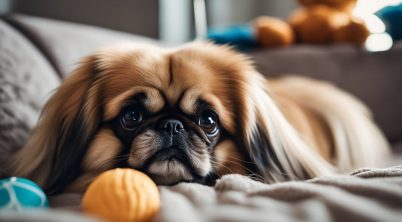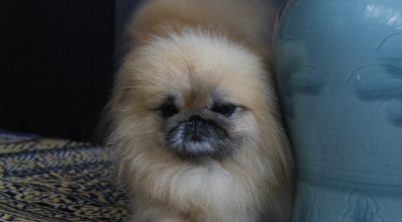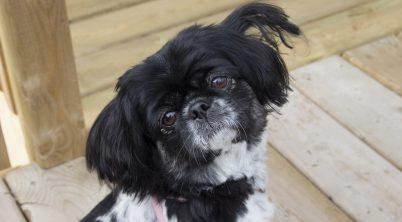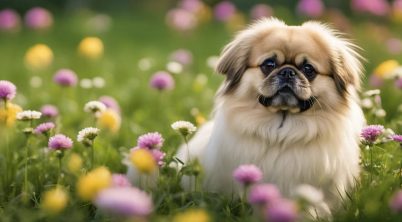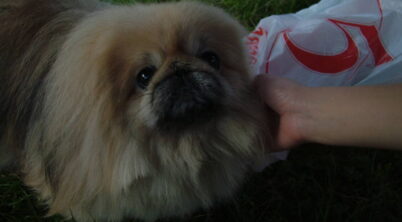The Pekingese, a small breed celebrated for its distinctive mane and lion-like appearance, boasts a unique energy profile that reflects its imperial Chinese heritage. Despite their regal background, these dogs are known for having moderate activity needs. Pekingese dogs are tailor-made companions for a more sedentary lifestyle, as they require about an hour of physical activity per day, conveniently split into shorter sessions. This can be beneficial for pet owners living in urban settings or those who prefer less vigorous daily routines.
At the core of their being, Pekingese possess a calm disposition that aligns with their physical activity levels. While they appreciate short walks and playful interactions, they are not a breed that demands extensive physical exertion. Their exercise needs can be easily met with a couple of 15- to 20-minute walks coupled with a relaxed play period. Catering to their physical needs ensures the Pekingese remains both physically and mentally stimulated, an important aspect of overall canine well-being.
Understanding the Pekingese’s exercise requirements is vital for prospective and current owners. Although they are small and relatively less active compared to other breeds, maintaining a regular and appropriate exercise regimen helps to prevent obesity, promotes good health, and keeps their minds sharp. By respecting their limitations and providing suitable levels of activity, Pekingese owners will find their companions to be well-adjusted and content members of the family.
Table of Contents
Pekingese Activity Levels
Pekingese, known for their distinct appearance and regal history, are toy-sized companions well-suited for a less active lifestyle. Weighing up to 14 pounds, these small dogs possess a calm and confident character.
Exercise Needs:
- Daily Walk: At least 20 minutes.
- Intensity: Low; short bouts of play or gentle fetch.
Typically, the Pekingese’s energy level is lower compared to other breeds, making them suitable for apartment living and owners who prefer a more relaxed pace. Despite their size, they do require regular exercise to maintain good health and prevent obesity.
Key Temperament Traits:
- Independent, which may affect trainability.
- Affectionate with family, ensuring they are involved in family activities.
The Pekingese sports a luxurious double coat, coming in various colors. While their appearance exudes opulence, their exercise needs are modest. Owners should be mindful of their distinctive rolling gait, as excessive activity can lead to respiratory difficulties, especially due to their short muzzles.
Intelligence and Training:
- Moderately intelligent, responding well to patient, consistent training.
- Training sessions should be short, engaging, and positive.
In summary, the Pekingese is a majestic breed that requires a modest level of activity to thrive. Owners should prioritize quality over quantity when planning their furry companion’s exercise routine.
Health and Development
Pekingese dogs possess a distinctive set of health and development characteristics that owners should be aware of for appropriate care. Typically, the Pekingese lifespan ranges from 12 to 14 years, but their development and health can be influenced by numerous factors including diet, exercise, and genetics.
Growth and Weight Management
A Pekingese growth chart is a valuable tool in monitoring a puppy’s development. Healthy growth is marked by steady weight gain according to age and breed norms. Owners should guard against obesity, which can exacerbate potential joint problems and lead to respiratory issues due to the breed’s specific build.
Exercise for Energy Balance
The Pekingese requires a balanced approach to exercise; they have moderate energy levels and benefit from daily walks and playtime to maintain muscular strength and prevent weight gain. Overexertion, however, should be avoided as it can lead to respiratory difficulties.
Nutrition and Diet
Diet plays a critical role in maintaining the Pekingese’s health. A balanced diet that meets their nutritional requirements without leading to overfeeding is essential. Careful calculations based on age, neuter status, and activity level will help determine the correct portion sizes. Consultation with a veterinarian can ensure that their diet supports both development and health maintenance.
Health Screening
Owners should be proactive in screening for health issues common to Pekingese, such as skeletal and skin disorders. Early detection and management of health conditions can significantly improve the quality of life for these dogs. Regular veterinary check-ups are crucial for their development and health maintenance.
Living with a Pekingese
Exercise and Activity Levels The Pekingese breed has a low to moderate level of energy. They require up to one hour of physical activity per day, which can be conveniently split into two walks of 15 to 20 minutes each. In addition to walks, they benefit from playtimes that cater to both their mental stimulation and social interaction needs.
Coat Care A Pekingese’s luxurious coat demands regular grooming. They have a thick double coat that sheds moderately year-round, intensifying during shedding season. Routine brushing several times a week helps manage loose hairs and prevents matting.
Training and Socialization When it comes to training, Pekingese puppies can exhibit a streak of independence, making consistency and patience key. Socialization should start early, introducing them to various people, animals, and situations. This ensures they grow up to be well-adjusted adults.
Special Considerations for Puppies As for Pekingese puppies, monitoring their exercise is crucial due to their size. They are small and can be injured by too-rough play or overly strenuous activity. Access to fresh water and a balanced diet supports their development, with puppies requiring about 300-400 calories per day depending on their activity.
Taking Care Pekingese owners must be mindful of their dog’s sensitivity to heat due to their flat facial structure. Providing a cool environment and limiting outdoor activity to cooler parts of the day is essential. Always ensure that fresh water is accessible to prevent dehydration.

